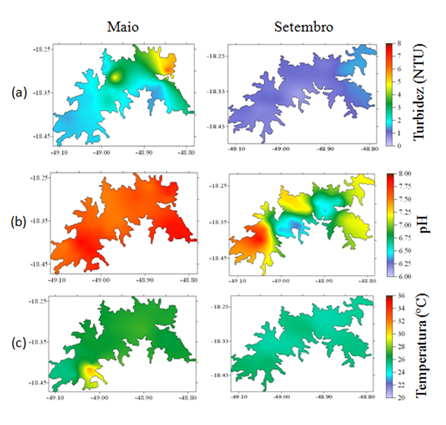Plant species and dispersal syndromes from the environmental protection areas of the city of Inhamum, Caxias, Maranhão, Brazil
Keywords:
Diaspore, dispersal, preservation, community ecology
Abstract
The present study was aimed to determine the dispersal syndromes of plant species found in the area for environmental protection of Inhamum. Data collection were performed using the quadrant method in three areas of the Cerrado, with allocation of 42 points in each area with a 10 meter spacing. The sample was composed of 476 individuals represented by 19 families, 33 genera and 33 species. The families with the greatest representativeness were: Anacardiaceae, Caesalpiniaceae, Fabaceae and Mimosaceae, each one of them with three species. The most representative families based on the number of individuals were: Fabaceae (157 individuals) and Mimosaceae (111 individuals). The species with the largest number of individuals was Bowdichia virgilloides (119 individuals). Considering the dispersal syndromes of the study species, it has been found that 271 were anemochorous (57%), 117 individuals (24.5%) zoochorous, and 88 autochoric (18.5%). Considering each area was separately, the Cerrado stricto sensu had 24 species, with eight (33.3%) being zoochorous, 13 (54.2%) anemochorous and three (12.5%) autochoric. In the so-called Cerradão, 26 species were found among them, 11 (42.3%) were zoochorous, 12 (46.2%) anemochorous and three (11.5%) autochorous. In the Campo sujo, 28 species were found, with 13 (46.4%) zoochorous, 12 (42.9%) anemochorous and three (10.7%) autochoric. The anemochorous species is typical of the Cerrados and, therefore, it was the best represented species in the three areas. Based upon these findings it can be inferred that the large number of anemochorous species is due to the level of anthropization of the Cerrado in the study area.
Published
19/08/2011
Issue
Section
Papers
Authors maintain the copyrights for their work. However, they grant rights of first publication to Ambiente e Agua - An Interdisciplinary Journal of Applied Science. In compensation, the journal can transfer the copyrights, allowing non-commercial use of the article including the right of sending the article to other data bases or publication media. The journal uses the CC BY 4.0 license"






